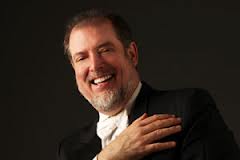|
Symphony
FROM THE NEW WORLD TO THE OLD WORLD
by Peter Lert
Saturday, June 14, 2025
Chamber
MC2 DUO RECITAL CLOSES 222'S SEASON
by Terry McNeill
Saturday, June 14, 2025
Choral and Vocal
CANTIAMO SONOMA'S LUSCIOUS A CAPELLA SINGING IN SEASON ENDING CONCERT
by Pamela Hicks Gailey
Sunday, June 8, 2025
Symphony
SRS SEASON ENDS WITH RESOUNDING TA-TA-TA-BANG
by Terry McNeill
Sunday, June 1, 2025
Symphony
YOUTHFUL VIRTUOSITY ON DISPLAY AT USO'S MAY CONCERTS
by Peter Lert
Saturday, May 17, 2025
Symphony
MYSTICAL PLANETS AND LIVELY GERSHWIN ORTIZ AT FINAL SRS CONCERT
by Peter Lert
Sunday, May 4, 2025
Symphony
VSO'S CONCERT MUSIC OF TIME, MUSIC OF PLACE
by Peter Lert
Sunday, April 27, 2025
VOCAL ELEGANCE AND FIRE AT THE 222'S RECITAL APRIL 26
by Pamela Hicks Gailey
Saturday, April 26, 2025
CANTIAMO SONOMA SINGS AN INSPIRED GOOD FRIDAY MOZART REQUIEM CONCERT
by Pamela Hicks Gailey
Friday, April 18, 2025
DRAMATIC SHOSTAKOVICH SYMPHONY CLOSES PHILHARMONIC'S 25TH SEASON
by Terry McNeill
Sunday, April 13, 2025
|
 |
 Pianist Garrick Ohlsson |
VENTURING INTO THE UNKNOWN
by Terry McNeill
Saturday, October 12, 2013
Along with pianist Garrick Ohlsson's formidable technique and artistry, curiosity has been a hallmark of his long career. Though playing the conventional repertoire superbly, he constantly ventures into unknown corners of piano music.
The centerpiece of his Oct. 12 recital at Weill Hall in Rohnert Park was the seldom-heard Liszt work Ad Nos, Ad Salutarem Unam, written for organ in 1852 and transcribed for piano in 1897 by Busoni. In 23 minutes, Liszt (or should it be Busoni?) builds a massive structure that tested the sonic extremes of the hall's new piano. Mr. Ohlsson began the work's questioning and solemn first theme with care and perfect chordal weighting, and the clarity of lines in an occasionally clangorous sonic mix was exemplary. The playing was mostly orchestral for nearly 13 minutes, then the sun came out in a lovely chorale that points to Liszt's daring late-period harmonies. It's easy in this work to make too many tempo modifications, but Mr. Ohlsson adopted a rock-solid pace, even when building rock-splitting sonorities.
The fugue began judiciously and was carried in short passages until a thunderous conclusion. Also admirable were the lengthy right-hand scale runs and scintillating parallel octaves. The Ad Nos demands stamina as well as technical brilliance, and Mr. Ohlsson had ample amounts of both. A standing ovation followed the final chord, with some in the audience seeming dazed by what they had heard.
Was the rest of the program thrown into the shade by this prodigious performance? Not really, although the six Debussy studies that began the second half sounded a little prosaic. The selections from Book I exploit wildly contrasting moods. Mr. Ohlsson lavished here his considerable beauty of timbre and control of technical details, such as colorful glissandi, will-of-the-wisp passages and rapid chords in pesky close-hand positions. He has very large hands but manages to solve with apparent ease Debussy's most intricate figurations. The third selection in double fourths, Pour les Quartes, had a perfect impressionistic legato and was almost lapidary in execution.
The first half began with Brahms' B Minor and G Minor Op. 79 Rhapsodies, and the recital finished with Chopin's F Minor Fantasy, Op. 49. Both Brahms were big-boned readings, wonderfully bass-heavy with deft left-hand crossover passages capturing the turbulent character of the first and the fatalistic and extroverted character of the second. It was echt Brahms for the connoisseur.
I have heard Mr. Ohlsson's rendition of the Chopin Fantasy several times, but this performance was the most inspired and interesting. He began pensively with deft touches, including three extended fermatas and subtly rolled left-hand chords. The lyricism appeared in the first of three main theme repetitions where the contrary octave playing was resounding and accurate. The chaste chorale section was delicately played, but the final version of the march was treated to an unexpected accelerando leading to a bravura and passionate ending.
Two encores satisfied the happy crowd of 900, beginning with the aristocratic C-Sharp Minor Chopin Waltz from Op. 64. Mr. Ohlsson had fun with this work, making wily rhythmic alterations at each returning theme and stressing the languorous nature of the piece until the end, when speed and delicacy prevailed. It's hard to play very fast and also softly, but it's outwardly child's play for Mr. Ohlsson. A volcanic performance of Rachmaninoff's ever-popular C-Sharp Minor Prelude closed the recital, with playing as individual and convincing as all that had come before.
|
